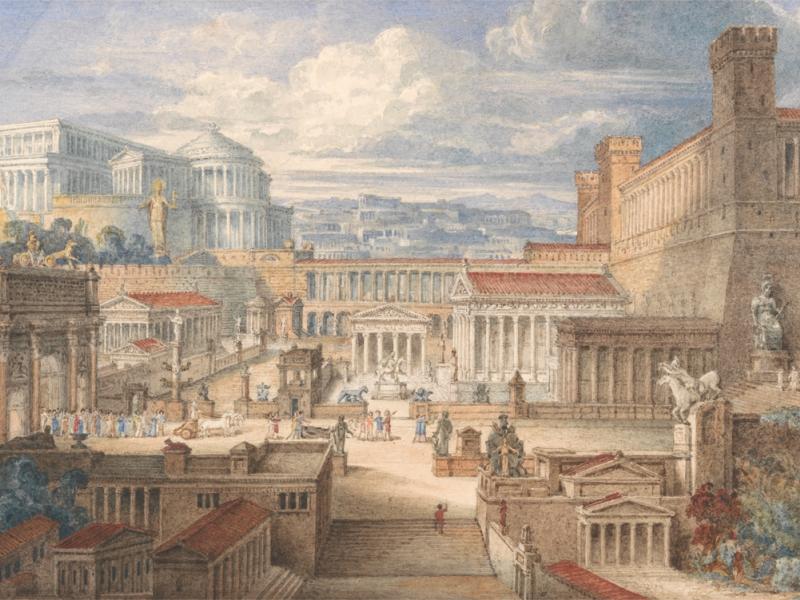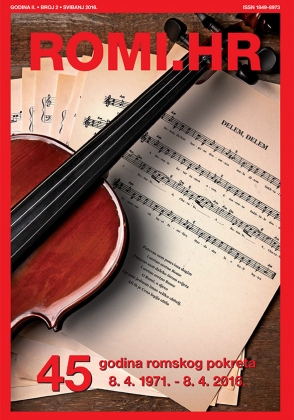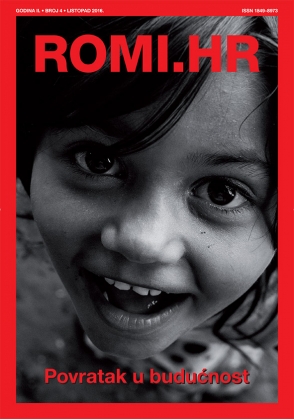Focus ROMI.HR
/The history of the first Roma groups that settled in Italy is rarely explored, and the impacts of the political changes that happened between Middle Age and the Renaissance on their lives are never discussed properly or taught in Italian schools. Understanding Roma people’s historical vicissitudes offers us another way to look at Italian history.
The early days of the first Roma groups in Italy are, unfortunately, scarcely documented, similarly to what happens for migratory flows directed towards the countries we today know as France, Germany, and Spain. All the few available sources rely on an anonymous chronicle that retraces all the events of 1422 in Bologna. This chronicle goes:
Anno Christi MCCCCXXII. On the 18th of July a duke of Ezitto came to Bologna, whose name was duke Andrea, and he came with women, children and men of his country; and there could be as many as one hundred people. This duke had renounced the Christian faith (…). And after the king of Hungary had taken them and rebaptized them, they wanted them to go out into the world for seven years and that they should go to Rome to the Pope and then return to their country (…) and they had a decree from the king of Hungary (…) for all seven years, in every part that they went, that no punishment could be done to them (…). They settled at the Porta Galiera, inside and outside, and slept under the porticoes, except for the duke, who was staying in the king's inn; and I was in Bologna for 15 days and during the time I was in Bologna many people went to see him, because he was the duke's wife, who said that she could guess and tell what a person would have in life, and also what he had at present, and how many children they had and whether a female was good or bad, and whether they had any personal defects (…).
The translation goes as follows: “Year of Our Lord 1422. On the 18th of July, a duke from Egypt came to Bologna, whose name was Duke Andrea, and he arrived with women, children, and men from his country; there were around a hundred people. This duke had renounced the Christian faith (…). And after the King of Hungary had captured and exiled him, they wanted him to travel the world for seven years and eventually go to Rome to see the Pope and then return to his homeland (…). They had a decree from the King of Hungary (…) that for all those seven years, wherever they traveled, no one could administer justice against them (…). They slept at the Porta Galiera, inside and outside, sleeping under the arcades, except for the duke, who stayed in a royal inn. They stayed in Bologna for fifteen days, and while they were there, many people came to see them because the duke’s wife claimed she could tell fortunes, predicting what a person would experience in their life, as well as their present circumstances, how many children they had, whether a woman was good or evil, and if they had any bodily defect (…).”
After their two-week stop in Bologna, they left for Rome, where they arrived some weeks later. Their presence in Rome is not widely documented, but it is possible to reconstruct why they needed to go there: to obtain a papal safe-conduct (salvacondotto papale) recognizing them as peregrines. This would have helped them gain protection and escape possible imprisonments or expulsions from civilian and religious authorities. They eventually managed to acquire said safe-conduct, but its authenticity is highly debated: indeed, at that time obtaining false documents for personal reasons or to access better living conditions was a common practice. Once the safe-conduct was in their hands, they passed it down from one generation to the other for decades, partially adapting its text and content to the place where they were, or the specific protection they needed.
Apart from this safe-conduct, the initial group that settled within the Italian territory was helped, at the beginning of its staying, by a conjuncture of events. Medieval Italy was brimming with many feudal lords and vassals, who often adopted different laws and policies. Hence, it was relatively easy for Roma to move from one territory to the other, and to flee bans and expulsions simply by relocating in the nearest village in which a different jurisdiction was at place. However, things turned for the worse at the end of Middle Ages (XIV century) when local lords reigning over small feuds started being gradually replaced by larger city-states, whose ultimate goal was to rule over their neighboring cities and the people living therein. Some of these Italian city-states are still well-known: in the northeastern side of the country one could find the Republic of Venice, whose power extended also throughout Istria, Dalmatia, and almost all of today’s Croatian coastal area. Central Italy was split among many independent duchies, which were openly fighting among themselves for power, and were constantly threatened by the cumbersome presence of the Papale State. Lastly, Southern Italy was divided between the Kingdom of Naples and the Kingdom of Sicily, both at that time placed under Spanish rule.
At that time, population in Italian city-states was composed of individuals who shared common characteristics, such as religious beliefs and language. To preserve internal order, Italian city-states followed the lead of more powerful and well-structured kingdoms, like the French and Spanish one, and started emanating decrees that expelled Roma and other various groups from their territories.
This objective drew together all the Italian city-states, overarching borders and even internal wars among them. Venice was the first to promulgate a law that banned Roma groups from its territory, in 1483, claiming that they were thieves and Ottoman spies. Even if there are no historical records of this last accusation, researches on the Turkish espionage system in Italy are still rudimentary and cannot rely on a variety of sources. Therefore, we cannot automatically exclude that some of these allegations were actually true. However, the most commonly accepted explanation is that any reason would have been good for Venice to expel Roma from its borders, and the espionage one was quite handy because, in those same years, the threat of an Ottoman-dominated Europe was getting increasingly more real. Milan followed by quickly, in 1493.
At that point, it was just a matter of time before this approach spread across Italy: in 1547 Florence declared that all Roma had to exit its territory within one month, otherwise they would have been arrested; Bologna did the same in 1565, but it gave Roma people an even shorter notice (one week). One year later it was the turn of the Papal State, and lastly, the Kingdom of Naples produced a series of highly effective announcements interdicting Roma from its territory between 1555 and 1585.
The history of Roma in Italy also shows how deeply interconnected their personal stories were with the broader context in which they were living. A good example in this sense is the impact of the Council of Trento (1545-1563) on their living conditions. The Council of Trento was an assembly organized by the Roman Catholic Church to rethink its structure and principles in response to the shocking Protestant schism that followed Martin Lutero’s accusations of corruption. The Council reacted by reinstating the predominance of the Pope and his powers, and all the core elements of Catholicism, including sacraments, indulgencies and, most importantly for this story, by condemning every spiritual doctrine outside of Catholicism. Obviously, this also included any sort of ‘magical’ and divinatory activities, for which – as mentioned earlier – Roma women were very renowned. Once again, the effects of the decisions taken by the Council of Trento on Roma people residing within current Italy have not been investigated, but it can be argued that the firm stand taken by the Roman Catholic Church against every pagan activity might have encouraged and/or accelerated the process of expulsions started by Italian city-states. As a matter of fact, aside from Venice and Milan, all other decrees have been passed after the Council of Trento ended.
Another example of how Roma people were part of Italian history can be found in their involvement in the Battle of Lepanto, which was fought in 1571. One year earlier, in 1570, a campaign of house-to-house searches was organized to find Roma individuals who could be sent to fight the Ottomans. This famous battle still plays a huge role in the history of Roman Catholicism, because it marked the victory of the Holy League, composed of many Italian city-states and regions under Spanish domination, against the Ottomans and Islam. The historical value of the Lepanto battle was already enormous in 1570s, to the extent that every person placed under Catholic powers had to give its own contribute to the cause. Hence, Roma men who had been enslaved by Venice were also recruited as rowers for the battle, and even though their efforts surely helped achieving this victory, their presence on Venetian ships is rarely mentioned and often dismissed.
There is an additional element that must be considered: the fear of plague and the desperate attempt by city-states to avoid health emergencies and contain the death toll as much as possible. Indeed, current Italy had already faced several outbreaks of plague, especially from mid-1500 onwards, and especially in the northern part of its territory. The number of deaths among the population in cities like Milan was dramatically high (where, for example, 18.000 people died of plague between 1576 and 1578), and such a catastrophe was also caused by the cities’ poor hygienic conditions that made the spread of the Black Death much easier. Additionally, plague outbreaks would often go hand in hand with famine, which resulted in generally lower level of physical wellbeing and widespread malnutrition, making contagion even more straightforward. For these reasons, some researchers have suggested an interesting hypothesis: that Roma people, along with other nomad groups, may have been massively expelled by Italian city-states because, by being homeless, they were seen as possible carriers of infections and diseases.
Therefore, from the early XVI century onwards, Roma groups were forced to live at the geographical and societal borders of the countries that were interdicting them. Yet, this approach somehow backfired on the Italian city-states who were enforcing it. For example, in the attempt to reduce crime and preserve public order, many members of Roma groups were expelled and consequently faced with growing poverty and the impossibility of earning money through palmistry or blacksmithing, as they used to. This often resulted in them engaging in illegal activities, such as theft, at the expense of the rest of the population, to satisfy their basic needs. At the same time, this reinforced other people’s perception of Roma as dangerous and amoral individuals that had to be kept as distant as possible for security reasons.
It is obvious that stories like this one are the fruit of their own epoch, and it would be unfair to discuss these events without considering how different society, politics, and economics were compared to today. Yet, looking back at the history of Middle Ages and Renaissance Italy makes us realize how Roma people were part of many crucial events that concerned this part of Europe, from epochal battles to horrifying pestilences, while also highlighting that much of their participation in history is often neglected and overlooked.
 Back to Focus
Back to Focus













